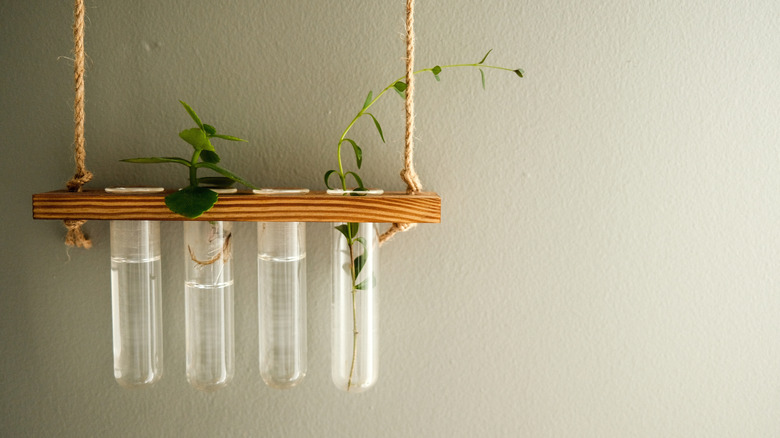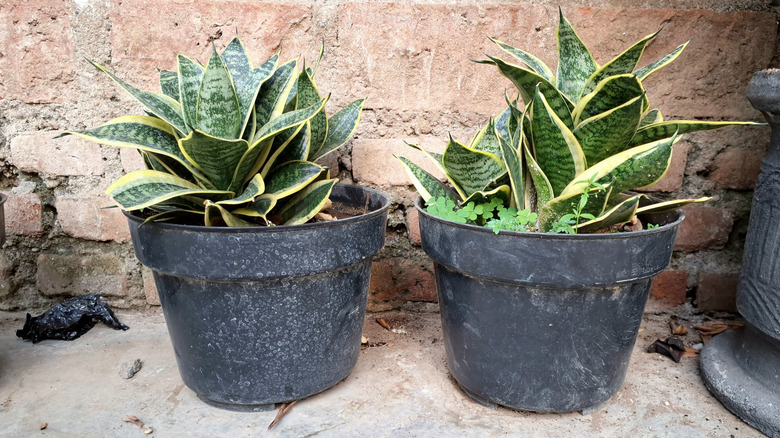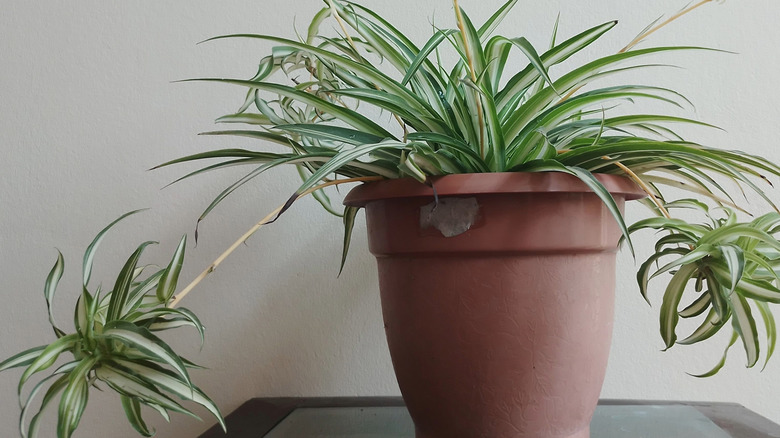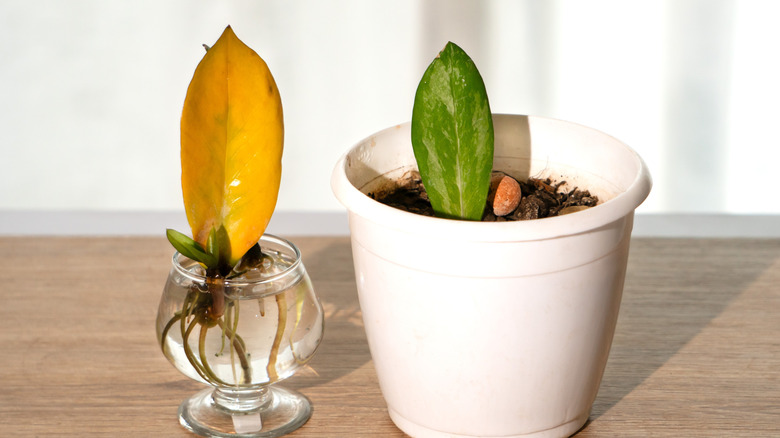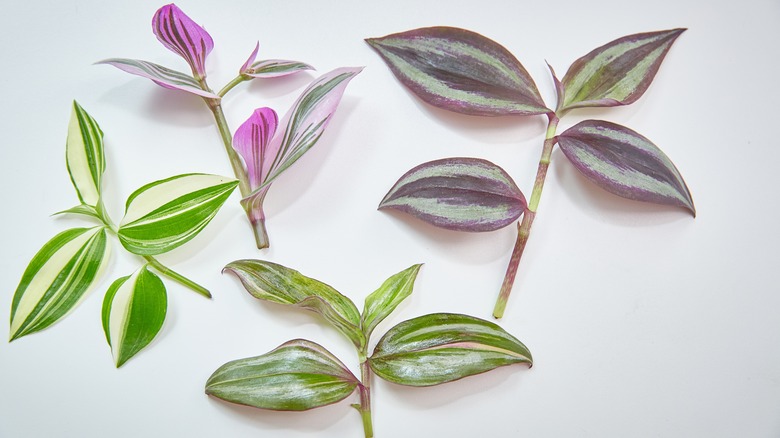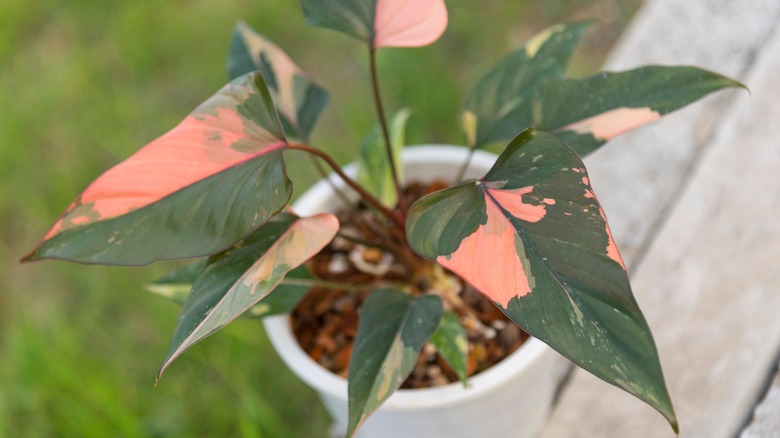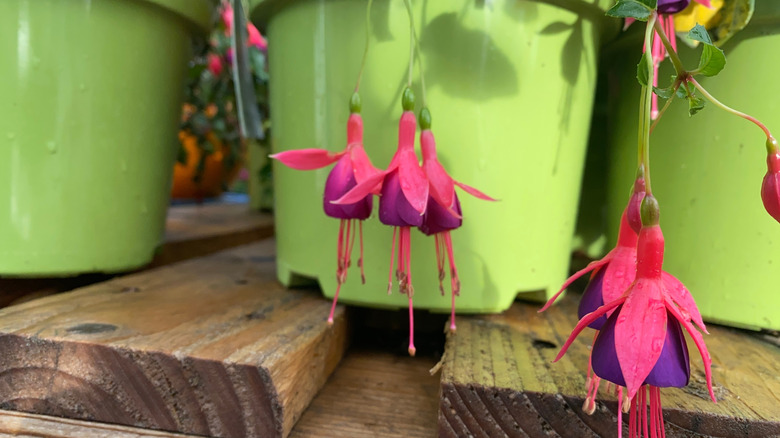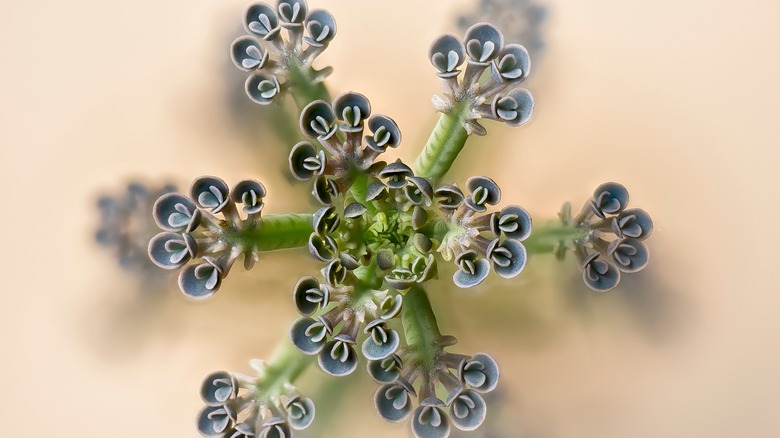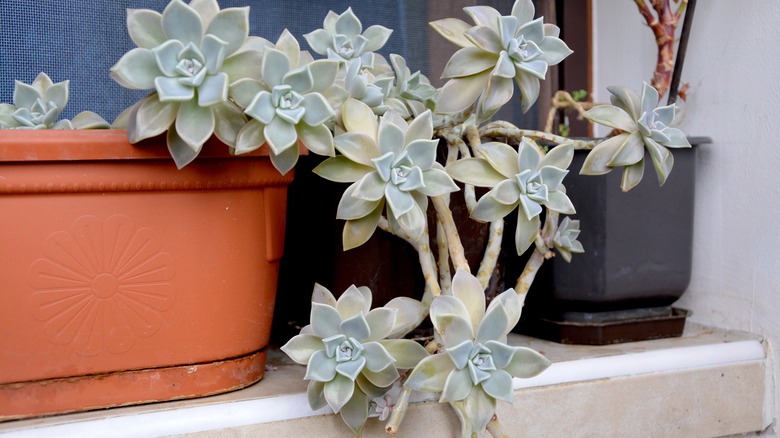16 Houseplants You Can Propagate In The Winter
We may receive a commission on purchases made from links.
Winter might sound like the worst time to propagate plants, but most houseplants can be propagated during any time of the year. While we know that winter typically brings challenges like lower light and slower root development, there are tropical and hardy houseplants that are naturally adapted to indoor conditions, making them ideal candidates for winter propagation.
That's why we've rounded up 16 of the hardiest houseplants that can be propagated in the winter and flourish like the champs they are. We'll explain what makes them such reliable candidates for cold-season propagation, plus offer a few practical tips for how to successfully propagate them in your home. With a little bit of extra attention, these resilient plants can still thrive and develop strong roots even when outdoor conditions are less than ideal. Whether you're looking to expand your plant hoard or just want to start a propagation project to beat the winter blues, these hardy plants are your answer.
Golden pothos
The Golden pothos (Epipremnum aureum) is one of the hardiest houseplants you can propagate in winter, because of its natural tolerance to temperature fluctuations and its vigorous growth habit. This tropical vine adapts well to indoor conditions year-round and continues to grow even when temperatures dip. Pothos propagates easily via stem cuttings, making it a reliable choice for cold-weather propagation when other plants might struggle.
To propagate your golden pothos in winter, take 4 to 6 inch stem cuttings just above a node and remove the lower leaves. You can propagate your cuttings in water or soil, though water propagation is often faster and easier to keep an eye on. Place your prop jar in a bright spot with indirect light, and change the water every few days if you're using the water method. Roots should develop within three to six weeks. Once they're 1 to 2 inches long, you can then pot them into soil or leave them in the water as-is.
Snake plant
Snake plants (Dracaena trifasciata) are incredibly durable and hard to kill, making them perfect for winter propagation. Native to the dry, rocky landscapes of West and Central Africa, these plants are exceptionally tolerant of neglect and temperature fluctuations, so they'll thrive even during winter when light is limited and growth naturally slows. Plus, they're one of the few plants that would probably prefer you left them alone, making them great for busy plant parents or frequent travelers.
To successfully propagate a snake plant, you'll start by taking leaf cuttings or dividing the plant at the rhizome. Leaf cuttings will require a set of sterile pruners, while rhizome division will need something more heavy duty, like this KAKURI Pruning Saw. Once you have your cutting, let it air dry for a day or two to develop a callous over the wound, then plunk it in a jar of water or into a small pot with substrate. Interestingly, research has shown that sand can be one of the best substrates for encouraging robust root development in snake plant cuttings, so skip the soil. Roots typically develop within four to eight weeks, though it may take longer in winter due to reduced light and cooler temperatures. Once the new plantlets establish, you can then transfer them to individual pots with regular potting soil.
Spider plant
Spider plants (Chlorophytum comosum) are among the most forgiving and beginner-friendly houseplants, making them excellent candidates for winter propagation. One of their best qualities is that they naturally produce adorable plantlets along their runners, which means you don't have to rely on difficult propagation techniques. Even during winter when many plants slow down, spider plants will continue generating these easy-to-propagate babies.
To propagate spider plants in winter, locate the spiderettes — the baby plantlets — growing along the runners extending from the mother plant. You can either root them in water or place a small pot of soil next to the mother plant and use a bent paper clip or wire to hold the plantlet lightly on top of moist soil until roots establish. The advantage of leaving them attached during this process is that the mother plant continues supplying nutrients, promoting faster growth. Once the plantlet has established strong roots and appears healthy, cut it free from the mother plant and continue caring for it as a standalone specimen. If rooting in water, simply place the plantlets in a jar of water, being careful not have the leaves submerged, and allow the roots to develop for one to two weeks before potting them up.
ZZ plant
ZZ plants (Zamioculcas zamiifolia) are some of the toughest houseplants around, which is why they're perfect for winter propagation. Their ability to tolerate low light and infrequent watering comes from their native environment in drought-prone parts of East Africa, where they store water in underground rhizomes. This built-in resilience means they aren't as affected by the shorter, darker days of winter, and will happily root even when other plants are dormant.
There are a few ways to propagate a ZZ plant, but the easiest options are stem cuttings or division. For stem cuttings, snip off a healthy stalk near the soil line and pop it in a jar of water. Be patient, as it can take a few months for roots to appear. For a quicker method, divide a mature plant by gently separating a section of the rhizomes and repotting it. Leaf cuttings also work, but they can take the longest to show new growth, sometimes up to a year. No matter which method you choose, keep your new plant babies away from drafts and in a warm spot with bright, indirect light.
Chinese evergreen
Chinese evergreens (Aglaonema) are among the easiest houseplants to propagate indoors, even in winter. These tropical plants are incredibly adaptable to low light conditions and can handle a range of temperatures, so the shorter days and cooler indoor air of winter won't slow them down much. Their forgiving nature and ability to tolerate neglect mean they'll root reliably, even during the dormant season.
To propagate Chinese evergreens in winter, you can use stem cuttings or division. For stem cuttings, snip off a healthy stem with at least three to five leaves and place it in a jar of water, making sure the leaves stay above the waterline. Change the water every few days to give the cutting a hit of fresh oxygen. That said, if your plant is on the mature side, division is even easier: Gently separate a clump of stems with roots attached and repot it. Keep your new plants in a warm spot with medium-to-low indirect light and water when the top inch of soil feels dry. Roots should start appearing within two to four weeks. Once the roots are a couple of inches long, you can pot them up in well-draining soil.
Chinese money plant
The Chinese money plant (Pilea peperomioides) is a cute houseplant that stays small and is a fantastic candidate for winter propagation, because it naturally thrives in cooler climates. This evergreen perennial evolved in the mountain forests of China at high altitudes, so it's well-adapted to the cool, humid conditions that mimic a typical winter home. Its natural resilience to lower temperatures means it will continue to produce offshoots and root successfully even when the days are shorter.
Propagating a Chinese money plant is incredibly easy thanks to the little plantlets, or "pups," it sends up through the soil. Simply wait until these pups are a few inches tall and gently clip them from the mother plant, making sure to get a little bit of the root system, then plant the pups into their own small pots with well-draining soil. Another option is to take a stem cutting from a healthy, mature leaf, place it in water, and wait for roots to develop before potting it up. Keep your new plants in a spot with bright, indirect light and water when the soil feels dry to the touch.
Arrowheads
Arrowheads (Syngonium spp.) work well for winter propagation, because they are naturally easy-going and adaptable. These tropical plants thrive in a range of light conditions, from sun to partial shade, and their simple care requirements mean they continue to grow like champs even during the winter months. Plus, they come in a wide range of colors, so you can grab a few varieties and have a syngonium-heavy hoard in no time.
To propagate arrowheads in winter, take stem cuttings with at least one or two nodes and a few leaves, then plop it in a jar of water. Syngoniums will quickly propagate in water if you place them in a spot with bright, indirect light. Change the water every few days to keep it fresh and oxygenated, and you should see roots forming within a week or two. Once the roots are a couple of inches long, you can transfer the cuttings to a pot with well-draining soil. Another option is just plant the cuttings directly into moist soil, but rooting them in water first often yields faster results.
Inch plant
Tradescantia, also known as the "inch plant" or "wandering dude," are a species of incredibly prolific and easy-to-propagate houseplants. These fast-growing vines are known for their ability to root easily from stem nodes, which means you can create new plants with very little effort, even in winter. They also come in the most amazing colors and variegations, from the lightly pink-splotched blushing bride to the high-contrast pistachio cultivar with its bright green and creamy white stripes.
To propagate a tradescantia in winter, take a few stem cuttings, making sure each cutting has at least a couple leaves and a couple of nodes. You can place these cuttings directly in a jar of water, and you should see roots start to form within a week or so. Change the water every few days to keep it fresh, and once the roots are about an inch long, you can pot up the cuttings in well-draining soil. There's also the option of skipping the water prop setup and planting the cuttings directly into moist soil, but rooting in water is often quicker and more reliable.
African violet
African violets (Streptocarpus ionanthus) are a popular for a reason, with their brightly colored flowers and easygoing nature, often being ranked as one of the easiest houseplants to grow. While it is possible to grow them from seeds, you can create new plants from a single leaf, and because they're so eager to root, they make excellent candidates for winter propagation projects, even when it's cold and dreary outside.
To propagate an African violet, start by snipping off a healthy leaf from the mother plant, leaving about an inch of the stem attached. You can then place this leaf cutting in a jar of water or directly into a small pot filled with a light, airy potting mix or sand. If you're using water, make sure only the stem is submerged, and change the water every few days. You should see tiny roots begin to form in a few weeks. If you're rooting in soil, keep it consistently moist, but not waterlogged. In a month or two, you'll see tiny new leaves emerging from the base of the cutting, which is your cue that you've successfully made a new plant.
Begonia
Wax begonias are another excellent choice for winter propagation, thanks to their crazy levels of resilience. These plants have evolved some pretty clever adaptive traits to survive harsh conditions, like developing thicker cuticles and the ability to fold their leaves to conserve moisture. This natural toughness makes them great candidates for propagation, as they can readily regenerate from cuttings even during the less-than-ideal conditions of winter.
To propagate a wax begonia, you can either take stem cuttings or leaf cuttings. For stem cuttings, snip a piece of a healthy stem about 4 to 6 inches long, remove the lower leaves, and place it in a jar of water or moist potting mix. If you're using water, change it every few days. For leaf cuttings, you can either place a whole leaf with its stem in water or soil, but we've had success cutting a single leaf into sections and laying them on top of moist soil or moss. Keep your cuttings in a warm, bright spot, and you should see new growth in a matter of weeks.
Coleus
Want a plant that looks high maintenance, but anyone can keep alive? Try a coleus (Coleus scutellarioides). Coleus are known for their stunningly vibrant and patterned foliage, and the good news is they are ridiculously easy to propagate. They're so eager to root that you can take cuttings and have new plants in no time, making them a fantastic project for winter propagation. And since they're so idiot-proof to propagate, you don't need any special equipment or hormones to multiply your collection.
All you really need to do is snip off a few healthy stems, remove the lower leaves, and stick them in a glass of water. Place the jar in a bright spot, and you'll likely see roots begin to form within a week. Once the roots are an inch or two long, you can pot your new plants in some fresh potting soil.
Queen of hearts
The queen of hearts (Homalomena) may look lush, but it's surprisingly low-drama plant, making it a solid choice for winter propagation. These tropical beauties are pretty easy to please; just give them some partial shade and well-drained soil. They do love a bit of humidity, so you might want to group them with other planty friends, but their overall resilience means you can easily multiply them even during the colder months.
The quickest way to get more queen of hearts plants is by division. Just gently remove the whole plant from its pot and separate a clump of the plant that has its own roots and stems, then repot it. You can also propagate by snipping off a healthy stem and planting it in a pot with moist soil. To give it an extra boost of humidity, which these plants love, you can pop a plastic bag over the pot to create a mini greenhouse until you see new growth.
Fuschia
Fuchsias (Fuchsia magellanica) are famous for their beautiful, dangly, pink and purple flowers, but did you know that they're also surprisingly easy to propagate from cuttings? What makes them great for winter propagation is that they actually prefer cooler temperatures after they've rooted. This means you can get them started indoors during the winter and they'll be happy and ready to thrive by the time spring rolls around.
To propagate a fuchsia, take cuttings from new growth that hasn't become woody yet. Snip off a piece about 5 inches long and strip the leaves from the bottom couple of inches. Plop these cuttings in a jar of water, and you should see roots start to form in about three weeks; just make sure to keep the water topped up. Once you have a good inch or so of roots, you can plant your new fuchsias in a pot with fresh soil.
Swiss cheese plant
The Swiss cheese plant (Monstera deliciosa), with its iconic split leaves, is a must-have for any houseplant lover, and it's surprisingly easy to propagate. While you can propagate them any time of year, doing it in the winter might mean they take a little longer to root. Still, their willingness to grow from cuttings, division, or even air layering makes them a great candidate for a cold-season propagation project.
There are multiple ways to propagate a monstera, but we prefer water as it's easiest. To water propagate, you'll need to take a stem cutting that includes a node, which is the little bump on the stem where leaves and roots emerge. You can root your cutting in water or a well-draining potting mix. Just change the water every few days to keep it fresh. Once the roots are a few inches long, you can take it out and put it in soil or leave it in the jar; monsteras are known for being hardy enough to live just in water indoors.
Mother of millions
If you're looking for a plant that does all the propagation work for you, meet the mother of millions (Kalanchoe delagoensis). This succulent gets its name because it asexually reproduces by growing tiny plantlets all along the edges of its leaves. These little babies then fall off and readily root in just about anything, which means you can have a whole army of them in no time.
To propagate a mother of millions, you barely have to do a thing — just gently knock a few of the plantlets off the mother plant and sprinkle them on top of a pot filled with a cactus and succulent mix. Don't bother pushing them into the soil; they'll figure it out on their own. Alternatively, you can take a stem cutting, let it callous over for a few days, and then plant it in well-draining soil. Either way, in a short period of time you'll have more plants than you know what to do with.
Ghost plant
The ghost plant (Graptopetalum paraguayense) is another ridiculously easy succulent to care for. Though they're desert plants, ghost plants are hardy houseplants that can be propagated by cuttings or division. However, ghost plants will drop their own leaves and self-propagate, so you don't have to be precious with them, even in winter.
The easiest way to propagate a ghost plant is to just use leaves that have fallen off it. Gently twist a healthy leaf from the stem, let it callous over for a few days, and then lay it on top of some well-draining soil. For stem cuttings, just snip a piece off, let it dry for a couple of days, and then stick it in soil. No matter which route you choose, you'll have a new ghost plant in no time.
